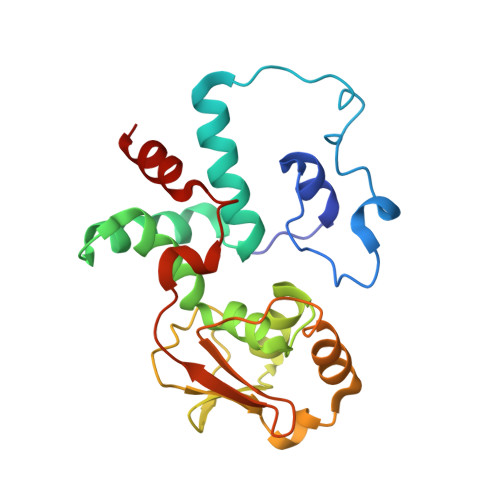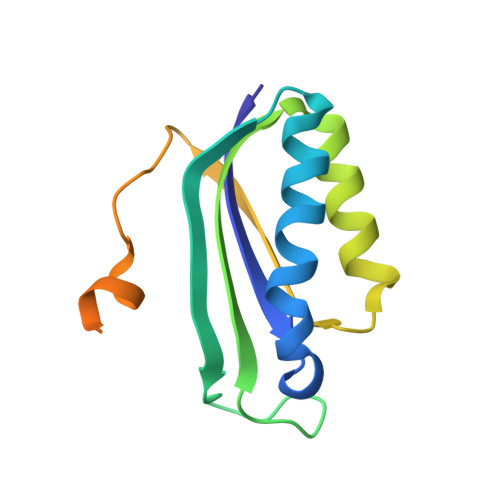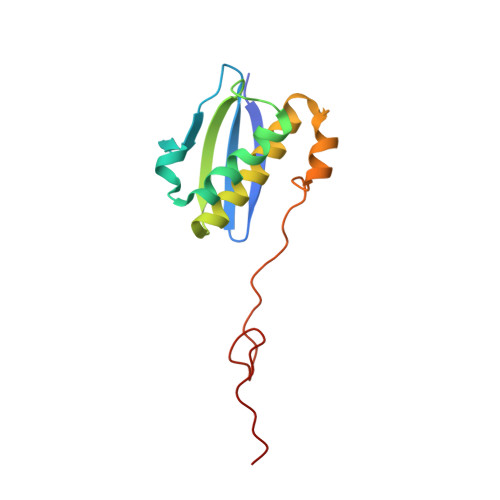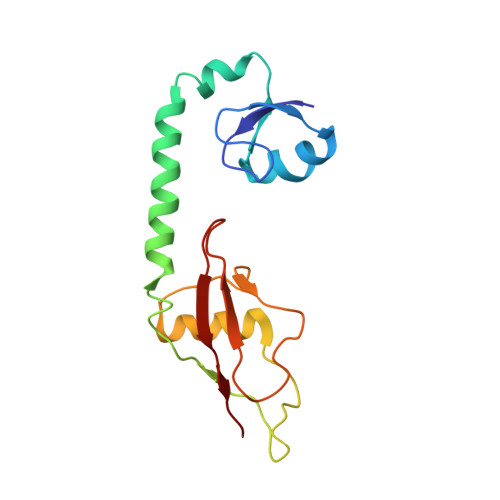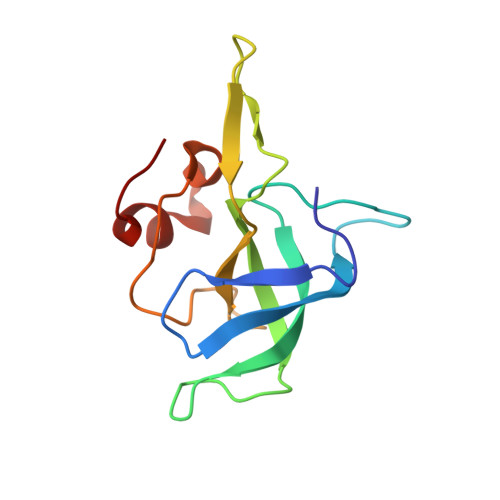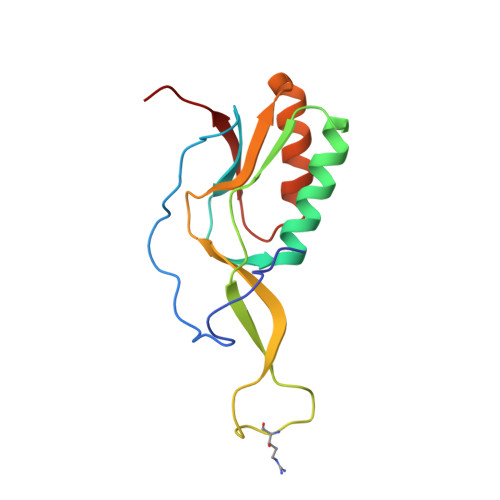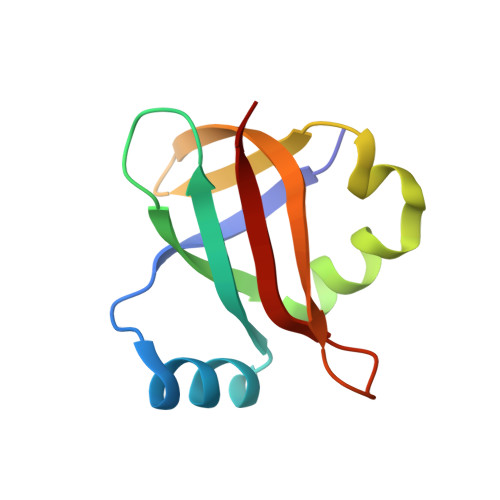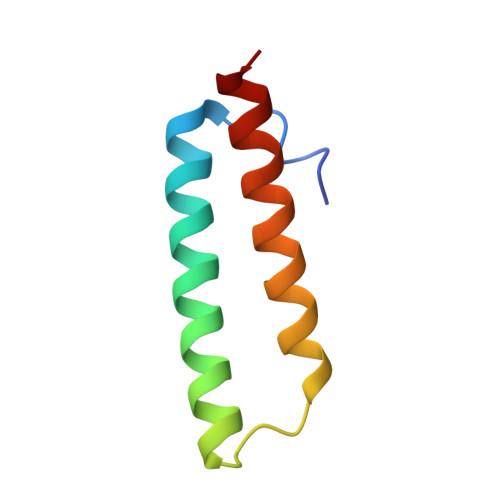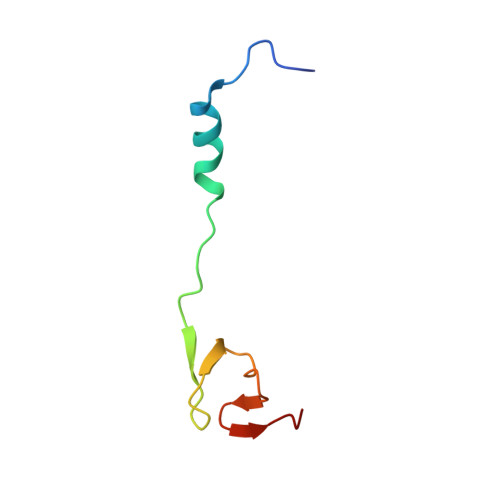Structural basis for the tryptophan sensitivity of TnaC-mediated ribosome stalling.
van der Stel, A.X., Gordon, E.R., Sengupta, A., Martinez, A.K., Klepacki, D., Perry, T.N., Herrero Del Valle, A., Vazquez-Laslop, N., Sachs, M.S., Cruz-Vera, L.R., Innis, C.A.(2021) Nat Commun 12: 5340-5340
- PubMed: 34504068
- DOI: https://doi.org/10.1038/s41467-021-25663-8
- Primary Citation of Related Structures:
7O19, 7O1A, 7O1C - PubMed Abstract:
Free L-tryptophan (L-Trp) stalls ribosomes engaged in the synthesis of TnaC, a leader peptide controlling the expression of the Escherichia coli tryptophanase operon. Despite extensive characterization, the molecular mechanism underlying the recognition and response to L-Trp by the TnaC-ribosome complex remains unknown. Here, we use a combined biochemical and structural approach to characterize a TnaC variant (R23F) with greatly enhanced sensitivity for L-Trp. We show that the TnaC-ribosome complex captures a single L-Trp molecule to undergo termination arrest and that nascent TnaC prevents the catalytic GGQ loop of release factor 2 from adopting an active conformation at the peptidyl transferase center. Importantly, the L-Trp binding site is not altered by the R23F mutation, suggesting that the relative rates of L-Trp binding and peptidyl-tRNA cleavage determine the tryptophan sensitivity of each variant. Thus, our study reveals a strategy whereby a nascent peptide assists the ribosome in detecting a small metabolite.
Organizational Affiliation:
Univ. Bordeaux, Centre National de la Recherche Scientifique, Institut National de la Santé et de la Recherche Médicale, ARNA, UMR 5320, U1212, Institut Européen de Chimie et Biologie, Pessac, France.












